#bob ruggiero
Explore tagged Tumblr posts
Text
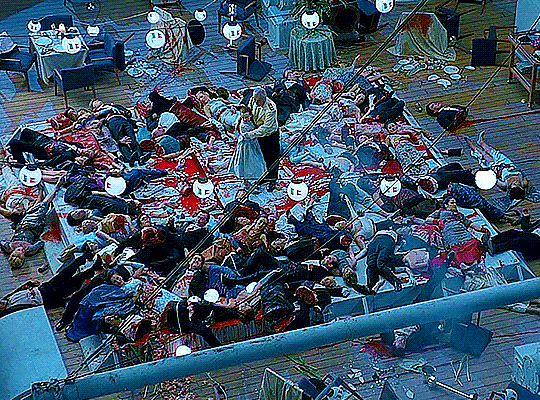


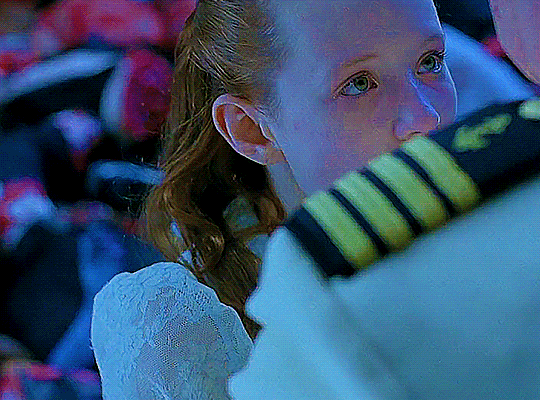
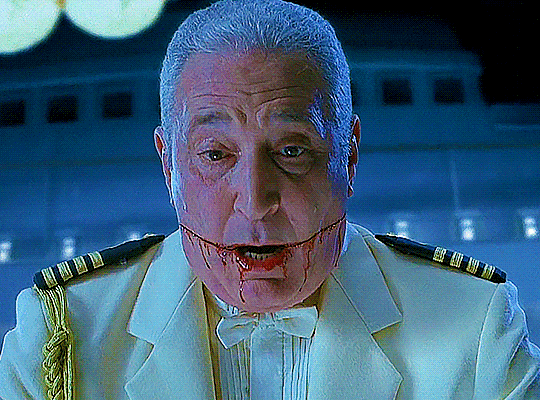
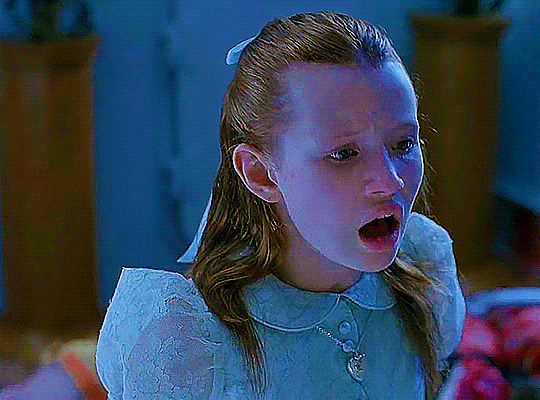
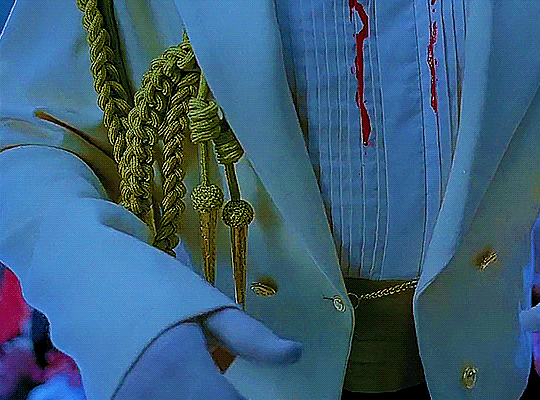


Ghost Ship (2002)
#ghost ship#horroredit#horroredits#movieedit#movieedits#filmedit#filmedits#emily browning#robert ruggiero#bob ruggiero#my gifs#edit
238 notes
·
View notes
Text

#170 Ghost Ship (2002)
Un barco remolcador lleva a una tripulación de recuperadores de barcos, capitaneados por Cap. Sean Murphy (Gabriel Byrne), entre ellos están: Maureen Epps (Julianna Margulies), Munder (Karl Urban), Dodger (Ron Eldard), Greer (Isaiah Washington) y Santos (Alex Dimitriades).
Los seis se dedican a recuperar barcos varados o abandonados y hacerse con las cosas de valor que tengan dentro, también pueden remolcar las embarcaciones hasta la costa que les paguen por la recuperación. Sea como sea, están experimentados en hacerlo, y cuando se encuentran en un bar celebrando uno de sus trabajos se le acerca un joven.
Se presenta como Jack Ferriman (Desmond Harrington), un meteorólogo que ha visto en uno de los radares marítimos un barco de gran envergadura vagando por aguas internacionales. Según la experiencia de Murphy, remolcar ese barco tan grande les puede traer grandes beneficios por lo que optan en hacer el trabajo, Jack les pide un 10% y acompañarles en el viaje a lo que acceden.
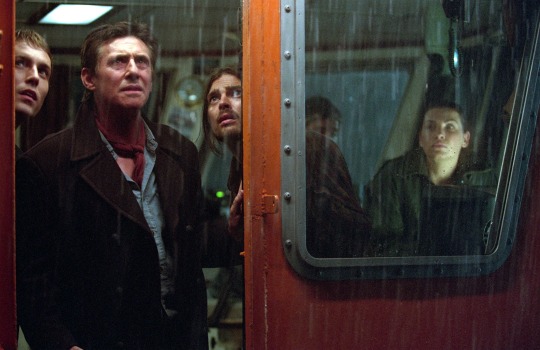

Se trata del, Antonia Garza, un barco perdido desde 1962 que nunca encontraron, ni a ningún miembro de la tripulación ni a ninguno de sus 600 pasajeros, lo cual lo hace todo un misterio. Y es así, ya que casi chocan con el barco buscándolo, ya que no siempre aparece en los radares y es muy difícil de detectar, por eso nadie ha llegado a él en años.
Todos se montan en el barco para investigarlo y aunque está destrozado por dentro, aún guarda la majestuosidad de la que fue dueño en tiempo pasado, tal y como Murphy explica, los barcos italianos no eran los más rápidos pero sí los más bonitos.
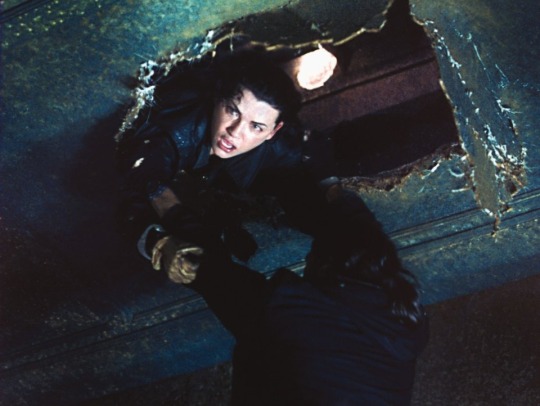

Encuentran en la cabina de mando que el timón está varado y que la brújula no funciona, pero aún peor, encuentran un reloj digital, que no existían en los años 60, por lo que sospechan que puede haber más personas en el barco que parece desierto.
Caminando por él y debido al paso del tiempo Munder tropieza y se abre un agujero en el suelo, Epps le ayuda a subir, pero en el piso de abajo le parece ver a una niña vestida de época mirándoles.
Conforme más tiempo pasan en el transatlántico, más se enrarecen las cosas, todo empieza con Greer escuchando a una mujer llamada Francesca (Francesca Rettondini) cantando por la radio que llevan todos para comunicarse.

La cosa se complica cuando Jack y Epps son encerrados dentro de la lavandería, la puerta se ha cerrado sin motivo y no pueden salir, buscando escapar abren otra compuerta y dentro del agua que se desbordan encuentran los cadáveres de otra tripulación. Huyen y llegan a una especie de bodega con coches, Epps quiere continuar, pero Jack se ve impresionado por un Jaguar de los 60.
Epps ve algo moverse en un lugar de almacenamiento y resultan ser ratas custodiando 4 cajones de madera llenos de oro.
Aunque el resto también ha tenido extrañas visiones, lo dejan de lado cuando Epps le informa del oro. Deciden entre el oro o el barco y se queda con el oro, ya que este debe valer unos 300.000 millones de dólares, lo que emociona a todos menos a Epps que tiene una mala sensación sobre el barco.

Buscando como cargar el oro en su barco y haciendo los preparativos para irse, Santos pone a punto el motor, pero algo abre la bombona de propano, por lo que cuando encienden el motor explota el pequeño remolcador. Santos muere y Greer queda muy malherido. Todos vuelven al barco y empiezan las desavenencias, unos quieren simplemente huir y otros quieren arreglar el transatlántico para poder llegar a la costa.
Greer se separa del grupo cansado de que no le tomen en serio y se va al salón principal donde vuelve a escuchar cantar a Francesca, pero esta vez ve como el salón no está destruido y vuelve a ser el salón del barco original, donde todos le aplauden y Francesca se siente seducida por él. Greer se deja querer y persigue a Francesca después de besarla, ella se va desnudando y lo engaña para que al ir a alcanzarla caiga por el hueco del ascensor y muera.
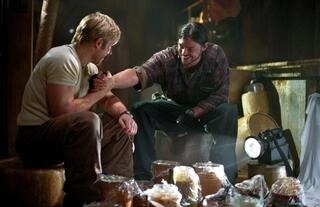
Munder y Dodge buscan comida y encuentran botes viejos de hace 40 años, sorprendentemente se encuentran en buenas condiciones y cuando los abren para comerlos están deliciosos, después de un momento se dan cuenta de que era una ilusión y que en realidad están llenos de gusanos.
Epps busca en los registros del barco a la niña y encuentra su camarote, va a visitarla y ve todas sus cosas, no era más que una niña de 10 años viajando sola para encontrarse con sus padres, cuando abre las puertas correderas de la cama, encuentra el cadáver de la niña colgado de una soga. Entonces se le aparece el fantasma de la niña, que se presenta como Katie Harwood (Emily Browning).
Murphy va al camarote del capitán y se encuentra con este ofreciéndole una copa de Whiskey, allí le cuenta que dos días antes de que se esfumara su barco rescataron a un barco llamado Lorelei del que subieron unos cajones de madera y con un solo superviviente, le enseña fotos y le hace un gesto para que entienda que el oro está maldito.
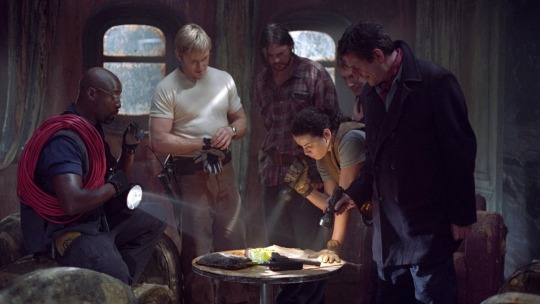
Murphy intentando huir se tropieza con el fantasma de Santos que le culpa de su desgracia, mostrándose quemado completamente por la explosión. El capitán huye atemorizado por su visión.
Katie le enseña mediante sus recuerdos y visiones a Epps que ocurrió la noche que el Antonia Gaza se esfumó de la tierra:
Parte de la tripulación traiciona a la otra parte, matando primero a los cocineros. Mediante varias tandas de crímenes deciden acabar con toda la gente del barco, a algunos los envenenan con la comida, dejando que mueran. A otros los cortan con un cable metálico tensando mientras bailan. Ahí observamos que Katie se salva por los pelos, gracias al capitán.
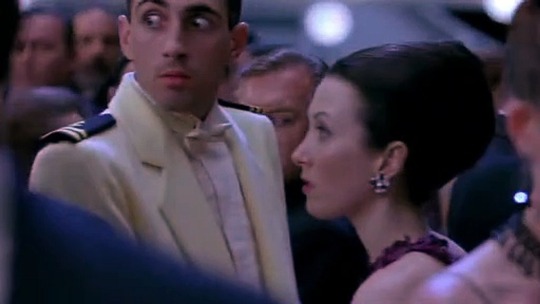
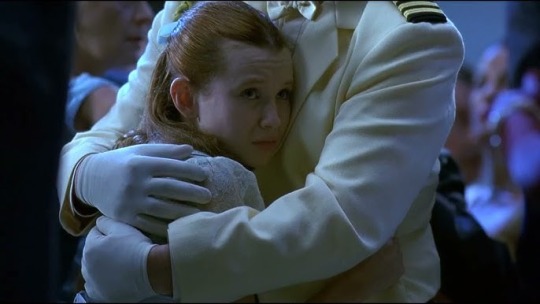

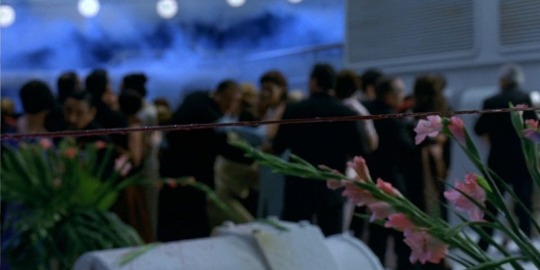
Katie sale huyendo y ve como a otros los están asesinando, disparándoles con armas y dejándoles caer en la piscina. Un par de hombres se llevan a Katie a su camarote y de camino ve a gente huir y a otros de los asesinos cortarles el cuello a los que se resisten, así lentamente acaban con la vida de todas las personas del barco, excepto de Francesca que parece estar con los asesinos.
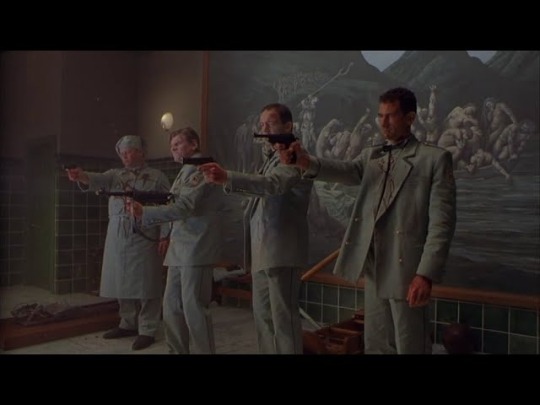


Francesca le pide a uno de ellos que traicione al resto de sus compañeros para quedarse con ello y eso hace, pero antes de que se pueda dar cuenta, ella le dispara un tiro en la cabeza, matándolo. Detrás de ella hay un hombre por el que deducimos que está enamorada, se besan apasionadamente, pero este la traiciona también a ella asesinándola.
Mediante esa visión, Katie le enseña a Epps que ese hombre es Jack Ferriman el hombre que los ha engañado para ir a ese barco a morir.
Epps va en busca de Murphy, pero cuando le encuentra lo confunde con Santos que lo estaba acosando y la ataca, hasta que llega Jack y deja inconsciente al capitán, encerrándolo en el acuario. Epps intenta contarles todo a Dodge y Munder, pero le es imposible, Jack no se va y no sabe como deshacerse de él.

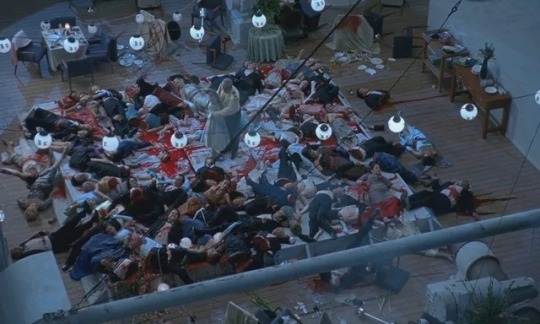
Cuando quiere volver a por Murphy, este ha sido asesinado y lleva en la mano la foto de Jack Ferriman que le ha dado el antiguo capitán, por lo que sabe que Jack va a matarlos a todos para quedarse con sus almas tal y como le cuenta Katie.
Munder se ha metido debajo del agua para reparar el barco soldando la grieta que tiene, mientras que Dodge vigila el timón para no chocar. Epps le dice que se tienen que ir como sea y le da un arma para que vigile a Jack, Dodge entiende a que se refiere.

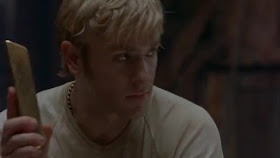
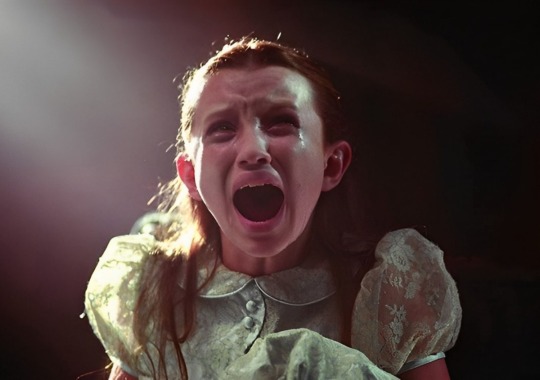
Cuando Epps va a salvar a Munder se da cuenta de que ha sido aplastado por un mecanismo del barco y que no tienen escapatoria, por lo que decide montar todo el C4 para hacer estallar el barco y que se hunda. En ese momento entra Dodge y le dice que ha tenido que disparar a Jack y que está muerto, cosa que Epps duda, le pregunta que hace y si no quiere quedarse todo el oro para ellos dos.
Epps se da cuenta en seguida de que ese no es Dodge, ya que no le ha preguntado por su mejor amigo Munder, aquí descubrimos que Jack ha matado a Dodger y se ha transformado en él. Vuelve a su forma original y le cuenta a Epps que no puede permitir que hunda el barco, lo necesita para cubrir su cupo de almas y tener contento a su jefe.
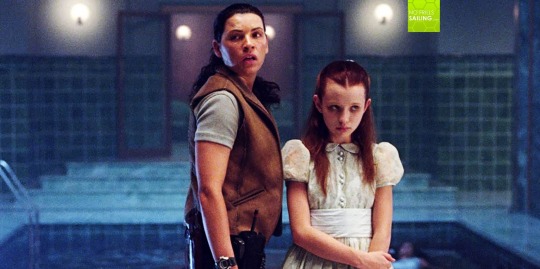
Se trata de un captador de almas que fue castigado con ese trabajo después de toda una vida de pecado, por lo que necesita una embarcación en funcionamiento para atraer almas pecadoras hasta su oro y quedarse con ella. A las almas inocentes como la de Katie no las puede controlar porque no han pecado, pero el resto están a su servicio y estarán siempre aquí.
Jack le propone a Epps su vida a cambio del barco y esta decide accionar el botón de los explosivos, prefiere liberar a todas las almas del barco. Las buenas irán al cielo, como Katie. Las malas al infierno.
Con la explosión, Epps acaba en el agua aferrada a una madera y puede ver como el barco se hunde y las almas suben al cielo, se despide de Katie y espera que descanse.
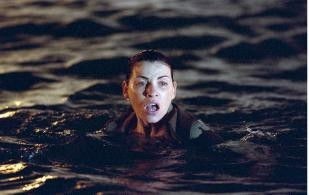
Un crucero encuentra a Epps después de varios días a la deriva flotando y cuando llegan a tierra llaman una ambulancia para que se haga cargo de ella, ya que está muy débil, lleva días sin comer y en el mar con la insolación. Todo el mundo ayuda a Epps y cuando están cargando el barco observa anonadada como suben las cajas de madera con el oro. Se incorpora, y ve a Jack subiendo al barco después del oro.
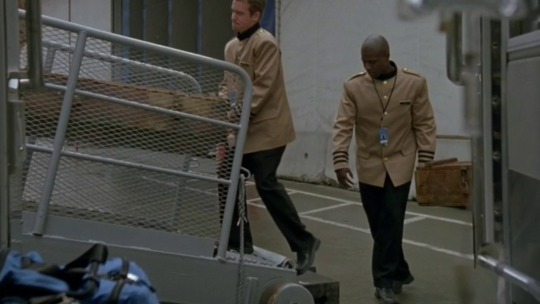

Todo va a volver a empezar, el oro sacará lo peor de las personas y estás harán cualquier cosa para pecar y quedarse con su parte, sin importar matar a inocentes.
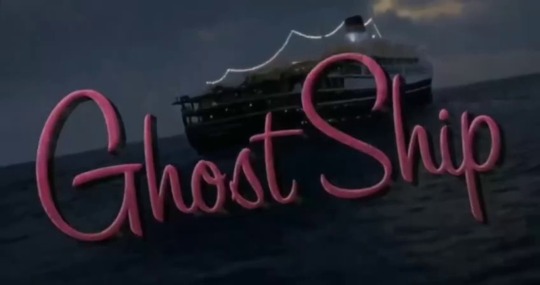
#gabriel byrne#julianna margulies#karl urban#ron eldard#Isaiah Washington#alex dimitriades#desmond harrington#Francesca Rettondini#emily browning#ghost ship#horror films#film#cinema#pelicula#Bob Ruggiero#Boris Brkic#Adam Bieshaar#James Giddens#Iain Gardiner
5 notes
·
View notes
Photo
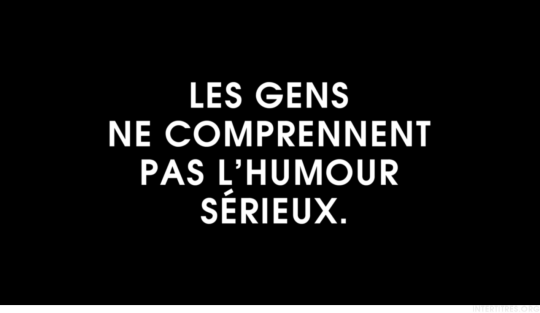

😻 WE ARE BEAUTIFUL !
● WAB #005 ★ ti sento by Bob Sinclar & Matia Bazar ft. Antonella Ruggiero + @lapelledielle
♥︎ ma è un mondo che mi scoppia dentro + @dune-mosse
★ BK x @the-eternal-moonshine
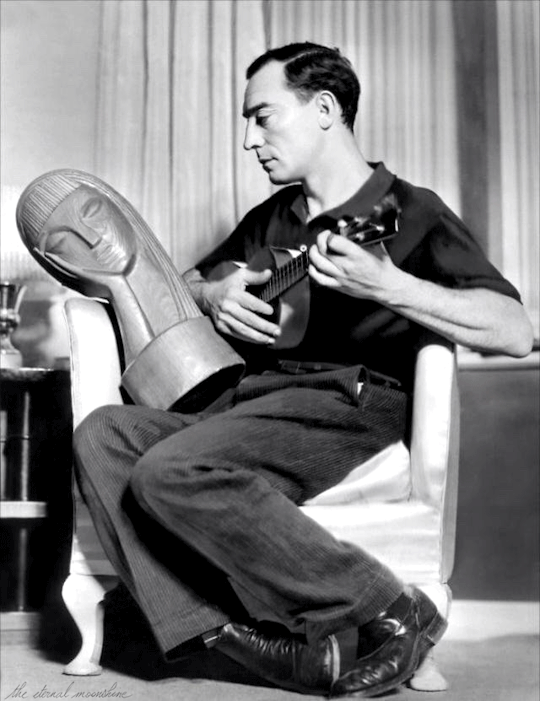
Buster Keaton x the-eternal-moonshine
#bob sinclar#matia bazar#antonella ruggiero#ti sento#2023#music#href=#j&k sounds#elle#moon#mosse#wab
325 notes
·
View notes
Text
Bob Sinclar & Matia Bazar Ft. Antonella Ruggiero - Ti Sento
youtube

26 notes
·
View notes
Text
Guarda "Bob Sinclar & Matia Bazar Ft. Antonella Ruggiero - Ti Sento" su YouTube
youtube
Come valorizzare un successo storico! 🎧😍
2 notes
·
View notes
Video
youtube
Bob Sinclar - Ti Sento (ft.Antonella Ruggiero) [VJ LOU Video Version] - ...
0 notes
Video
youtube
Bob Sinclar & Matia Bazar Ft. Antonella Ruggiero - Ti Sento
0 notes
Text
Bob Sinclar & Matia Bazar Ft. Antonella Ruggiero - Ti Sento
youtube
❤️&💚
Due occhi invadenti.
E un un brivo lungo la schiena...
👑♠️🌹
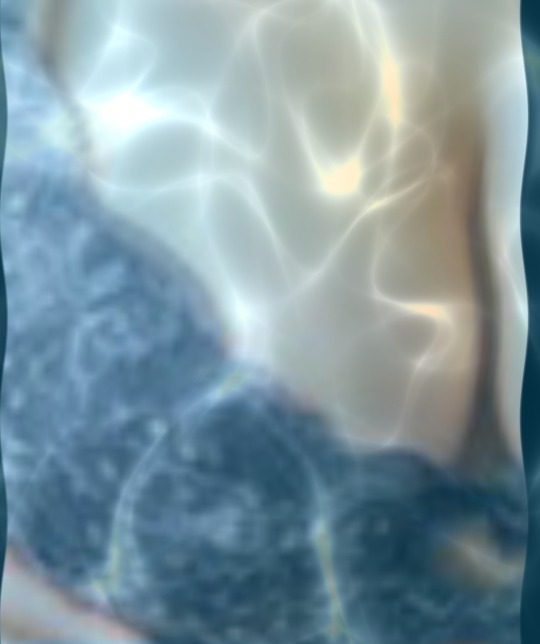
Ti sento...
0 notes
Text
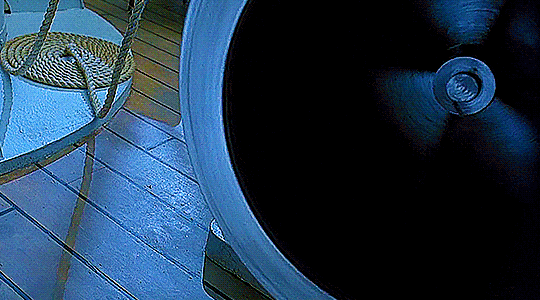


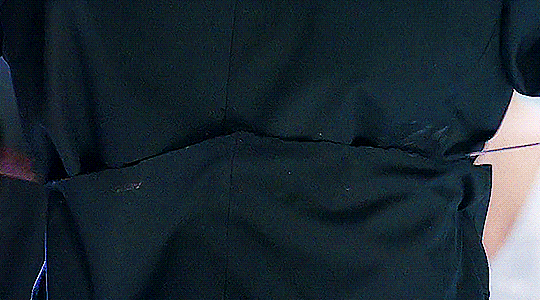


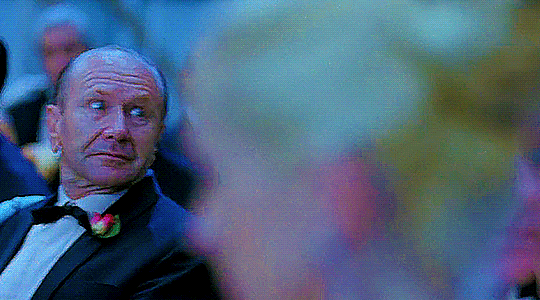



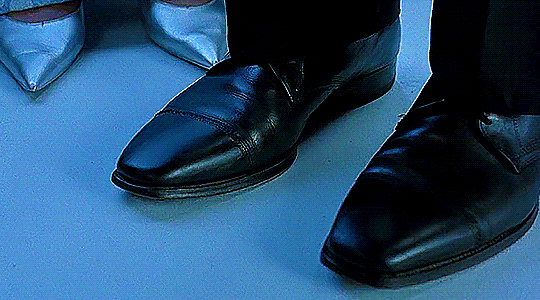

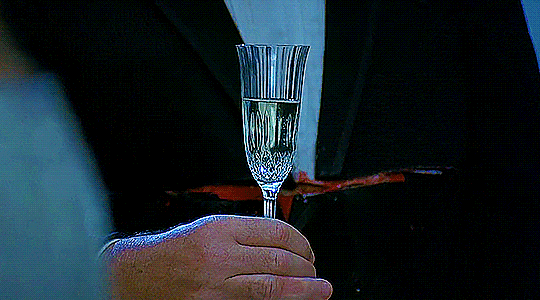

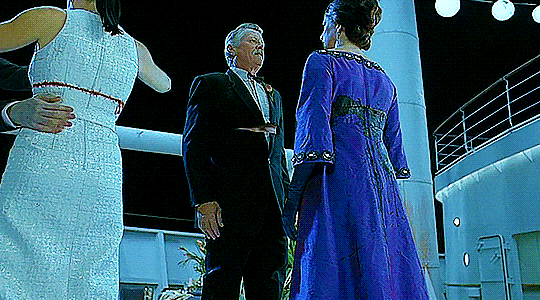
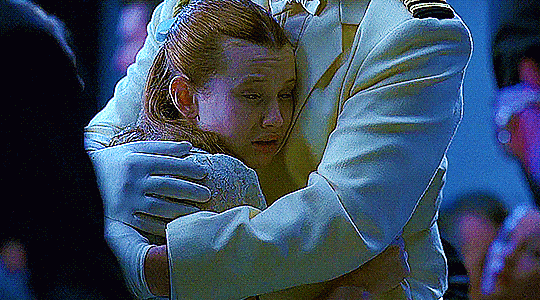
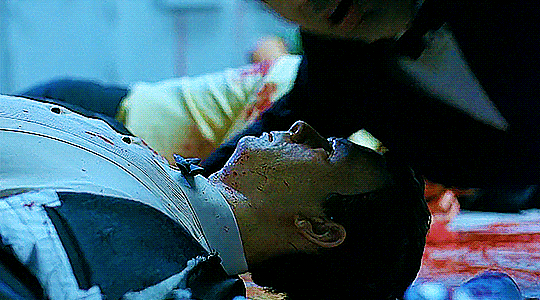

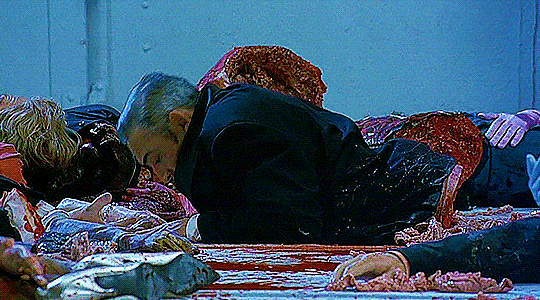


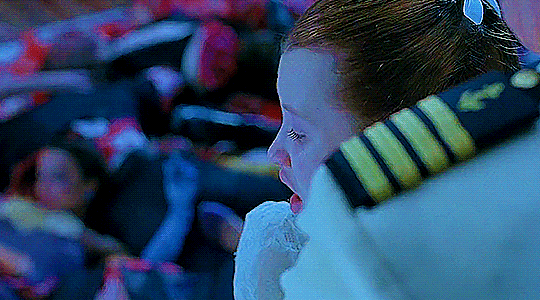
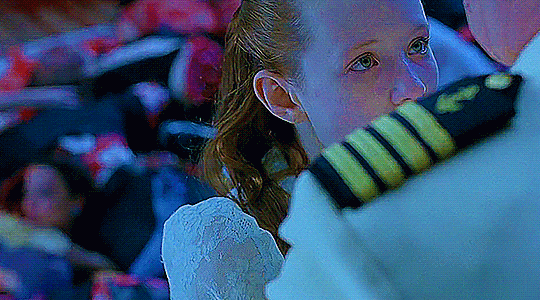

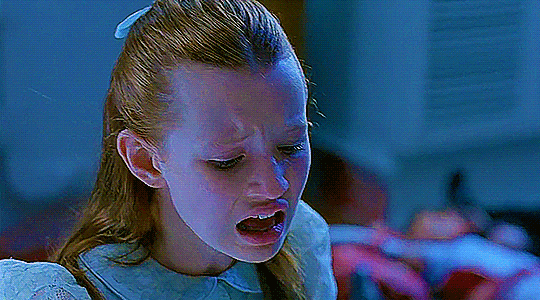
Ghost Ship (2002)
#ghost ship#horroredit#horroredits#movieedit#movieedits#filmedit#filmedits#emily browning#bob ruggiero#robert ruggiero#my gifs#edit
45 notes
·
View notes
Photo

#Stacey Farber#Degrassi#Drake#I'm Upset#Kevin Smith#Silent Bob#Lauren Collins#Jake Epstein#Adamo Ruggiero#Nina Dobrev#Shane Kippel
70 notes
·
View notes
Photo

Wilmer Alexander, Jr. and The Dukes - Give Me One More Chance (1968) (AKA Wilmer and the Dukes) Doug Brown from: "Give Me One More Chance" / "Get It" "In Dan's Garage #50 Upstate NY Vol. 1" (2011 Compilation)
R&B | Soul
JukehostUK (left click = play) (320kbps)
Personnel: Wilmer Alexander, Jr.: Vocals / Tenor Saxophone Doug Brown: Guitar Ralph "Duke" Gillotte: Hammond B-3 Organ Bob Eagan: Bass Vinnie Ruggiero: Drums
Gaspare Charles "Gap" Mangione: Keyboards
Horns: Chuck Mangione: Trumpet Sam Noto: Trumpet Wilmer Alexander, Jr.: Tenor Saxophone Larry Covelli: Tenor Saxophone Dennis Good:: Trombone Sonny Ausman: Trombone
Horn Arrangement by "Gap" Mangione Produced by Wilmer Alexander, Jr / Doug Brown
Recorded: @ Jerris Production Studio in Rush, New York USA
Released in the Spring of 1968
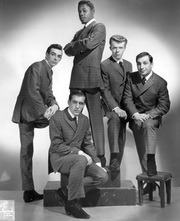
Wilmer and the Dukes
#Wilmer and the Dukes#Aphrodisiac Records#Wilmer Alexander Jr.#Wilmer Alexander Jr. and The Dukes#Give Me One More Chance#The Inferno#R&B#Soul#1960's#Doug Brown#Chuck Mangione#Gap Mangione#Buffalo#New York#Rush New York#Western New York
7 notes
·
View notes
Text
Rubin Carter
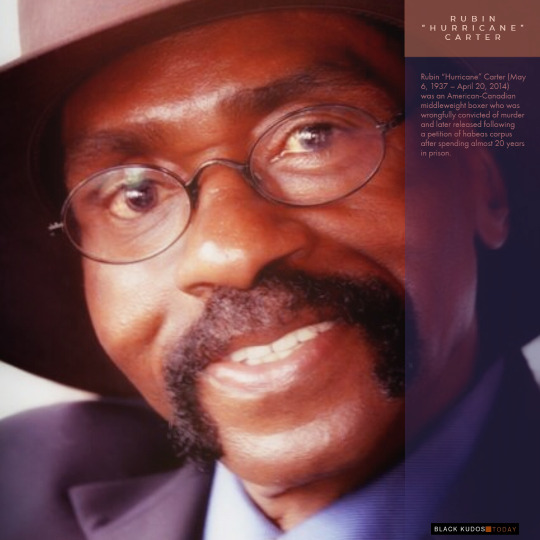
Rubin "Hurricane" Carter (May 6, 1937 – April 20, 2014) was an American-Canadian middleweight boxer who was wrongfully convicted of murder and later released following a petition of habeas corpus after serving almost 20 years in prison.
In 1966, police arrested Carter and acquaintance John Artis for a triple homicide committed at the Lafayette Bar and Grill in Paterson, New Jersey. Police stopped Carter's car and brought him and Artis, also in the car, to the scene of the crime. Carter and Artis were tried twice for the murders in 1967 and 1976 and convicted; both served time in Rahway State Prison. After the second conviction was overturned in 1985, prosecutors chose not to try the case for a third time.
Carter's autobiography, titled The Sixteenth Round, written while he was in prison, was published in 1975 by Warner Books. The story inspired the 1975 Bob Dylan song "Hurricane" and the 1999 film The Hurricane (with Denzel Washington playing Carter). From 1993 to 2005, Carter served as executive director of Innocence Canada (Formerly the Association in Defence of the Wrongly Convicted).
Early life
Carter was born in Clifton, New Jersey, the fourth of seven children. He acquired a criminal record and was sentenced to a juvenile reformatory for assault, having stabbed a man in self defense when he was 11. Carter escaped from the reformatory in 1954 and joined the United States Army. A few months after completing infantry basic training at Fort Jackson, South Carolina, he was sent to West Germany. While in Germany, Carter began to box for the Army. He was later discharged in 1956 as unfit for service, after four courts-martial. Shortly after his discharge, he was convicted of two muggings and sent to prison.
Boxing career
After his release from prison in September 1961, Carter became a professional boxer. At 5 ft 8 in (1.73 m), Carter was shorter than the average middleweight, but he fought all of his professional career at 155–160 lb (70–72.6 kg). His aggressive style and punching power (resulting in many early-round knockouts) drew attention, establishing him as a crowd favorite and earning him the nickname "Hurricane." After he defeated a number of middleweight contenders—such as Florentino Fernandez, Holley Mims, Gomeo Brennan, and George Benton—the boxing world took notice. The Ring first listed him as one of its "Top 10" middleweight contenders in July 1963. At the end of 1965, they ranked him as the number five middleweight.
He fought six times in 1963, winning four bouts and losing two. He remained ranked in the lower part of the top 10 until December 20, when he surprised the boxing world by flooring past and future world champion Emile Griffith twice in the first round and scoring a technical knockout. That win resulted in The Ring's ranking of Carter as the number three contender for Joey Giardello's world middleweight title. Carter won two more fights (one a decision over future heavyweight champion Jimmy Ellis) in 1964, before meeting Giardello in Philadelphia for a 15-round championship match on December 14. Carter landed a few solid rights to the head in the fourth that left Giardello staggering, but was unable to follow them up, and Giardello took control of the fight in the fifth round. The judges awarded Giardello a unanimous decision.
After that fight, Carter's ranking in The Ring began to decline. He fought nine times in 1965, winning five but losing three of four against contenders Luis Manuel Rodríguez, Dick Tiger, and Harry Scott. Tiger, in particular, floored Carter three times in their match. "It was", Carter said, "the worst beating that I took in my life—inside or outside the ring". During his visit to London (to fight Scott) Carter was involved in an incident in which a shot was fired in his hotel room.
Carter's career record in boxing was 27 wins, 12 losses, and one draw in 40 fights, with 19 total knockouts (8 KOs and 11 TKOs). He received an honorary championship title belt from the World Boxing Council in 1993 (as did Joey Giardello at the same banquet) and was later inducted into the New Jersey Boxing Hall of Fame.
Homicides
At approximately 2:30 a.m. on June 17, 1966, two men entered the Lafayette Bar and Grill at East 18th Street at Lafayette Street in Paterson, New Jersey, and began shooting. The bartender, James Oliver, and a customer, Fred Nauyoks, were killed immediately. A severely wounded customer, Hazel Tanis, died almost a month later, having been shot in the throat, stomach, intestine, spleen and left lung, and having had her arm shattered by shotgun pellets. A third customer, Willie Marins, survived the attack, despite a gunshot wound to the head that cost him the sight in one eye. During questioning, both Marins and Tanis told police that the shooters had been black males, though neither identified Carter or John Artis.Petty criminal Alfred Bello, who had been near the Lafayette that night to burgle a factory, was an eyewitness. Bello later testified that he was approaching the Lafayette when two black males—one carrying a shotgun, the other a pistol—came around the corner walking towards him. He ran from them, and they got into a white car that was double-parked near the Lafayette.
Bello was one of the first people on the scene of the shootings, as was Patricia (Patty) Valentine, a resident on the second floor (above the Lafayette Bar and Grill). Valentine told the police that she saw two black males get into a white car and drive off. Another neighbor, Ronald Ruggiero, also heard the shots, and said that, from his window, he saw Alfred Bello running west on Lafayette Street toward 16th Street. He then heard the screech of tires and saw a white car shoot past, heading west, with two black males in the front seat.Both Bello and Valentine gave police a description of the car that was the same. Valentine's testimony, in which she initially stated that the car had rear lights which lit up completely like butterflies, changed when she testified during the second trial to an accurate description of Carter's car, which had conventional taillights with aluminum decoration in a butterfly shape. The prosecution theorized that the dissimilarity in Valentine's description was the result of a misreading of a court transcript by the defense.
Investigation, indictment and first conviction
Hours before the triple murder, Carter was searching for guns that he had lost a year earlier. Carter was driving a white Dodge Polara, which was notable for its out-of-state license plate with blue background and gold lettering and taillights with butterfly-shaped aluminium decoration. Ten minutes after the murder, police stopped Carter's car. The police, who were searching for a vehicle with three occupants, let Carter go.Minutes later, the same police officers solicited a description of the getaway car from eyewitness Al Bello. He described the car as white with "a geometric design, sort of a butterfly type design in the back of the car", and as bearing out-of-state license plates with blue background and orange lettering. On hearing this description, the police realized that Al Bello was describing a car similar to the one that they had only moments earlier let go.
When police found Carter's car they stopped it and brought Carter and another occupant, John Artis, to the scene about 31 minutes after the incident. The police took no fingerprints at the crime scene, and lacked the facilities to test Carter and Artis for gunshot residue.
On searching the car about 45 minutes later, Detective Emil DiRobbio found a live .32 caliber pistol round under the front passenger seat and a 12-gauge shotgun shell in the trunk. Firearms Identification later established that the murder weapons had been a .32 caliber pistol and a 12-gauge shotgun. The defense later raised questions about this evidence, as it was not logged with a property clerk until five days after the murders. The prosecution responded to this line of questioning by producing a report lodged 75 minutes after the murders that documented the presence of the .32 caliber pistol round and 12-gauge shotgun shell. The defense was able to show that the bullet found in the Carter car was brass cased, rather than copper coated like those found at the Lafayette Bar, and that the shotgun shell found in the Carter car was an older model, with a different wad and color. In response, the prosecution argued that the metal and make of the retrieved ammunition was meaningless because the ammunition found at the crime scene was also dissimilar. Furthermore, the ammunition found in the car was usable by the murder weapons.
The police took Carter and Artis to police headquarters and questioned them. Witnesses did not identify them as the killers and they were released. Carter and Artis voluntarily appeared before a grand jury, which did not return an indictment.
Several months later, Bello disclosed to the police that he had an accomplice during the attempted burglary, one Arthur Dexter Bradley. On further questioning, Bello and Bradley both identified Carter as one of the two males they had seen carrying weapons outside the bar on the night of the murders. Bello also identified Artis as the other. Based on this additional evidence, Carter and Artis were arrested and indicted.
At the 1967 trial, Carter was represented by well-known attorney Raymond A. Brown. Brown focused on inconsistencies in some of the descriptions given by eyewitnesses Marins and Bello. The defense also produced a number of alibi witnesses who testified that Carter and Artis had been in the Nite Spot (a nearby bar) at about the time of the shootings. Both men were convicted. Prosecutors sought the death penalty, but jurors recommended that each defendant receive a life sentence for each murder. Judge Samuel Larner imposed two consecutive and one concurrent life sentence on Carter, and three concurrent life sentences on Artis.
In 1974, Bello and Bradley recanted their identifications of Carter and Artis, and these recantations were used as the basis for a motion for a new trial. Judge Samuel Larner denied the motion on December 11, saying that the recantations "lacked the ring of truth."
Despite Larner's ruling, Madison Avenue advertising executive George Lois organized a campaign on Carter's behalf, which led to increasing public support for a retrial or pardon. Muhammad Ali lent his support to the campaign (including publicly wishing Carter good luck on his appeal during the airing of The Tonight Show with Johnny Carson on September 7, 1973). Bob Dylan co-wrote (with Jacques Levy) and performed a song called "Hurricane" (1975), which declared that Carter was innocent. On December 7, 1975, Dylan performed the song at a concert at Trenton State Prison, where Carter was temporarily an inmate.
However, during the hearing on the recantations, defense attorneys also argued that Bello and Bradley had lied during the 1967 trial, telling the jurors that they had made only certain narrow, limited deals with prosecutors in exchange for their trial testimony. A detective taped one interrogation of Bello in 1966, and when it was played during the recantation hearing, defense attorneys argued that the tape revealed promises beyond what Bello had testified to. If so, prosecutors had either had a Brady obligation to disclose this additional exculpatory evidence, or a duty to disclose the fact that their witnesses had lied on the stand.
Larner denied this second argument as well, but the New Jersey Supreme Court unanimously held that the evidence of various deals made between the prosecution and witnesses Bello and Bradley should have been disclosed to the defense before or during the 1967 trial as this could have "affected the jury's evaluation of the credibility" of the eyewitnesses. "The defendants' right to a fair trial was substantially prejudiced", said Justice Mark Sullivan. The court set aside the original convictions and granted Carter and Artis a new trial.
Despite the difficulties of prosecuting a ten-year-old case, Prosecutor Burrell Ives Humphreys decided to try Carter and Artis again. To ensure, as best he could, that he did not use perjured testimony to obtain a conviction, Humphreys had Bello polygraphed—once by Leonard H. Harrelson and a second time by Richard Arther, both well-known and respected experts in the field. Both men concluded that Bello was telling the truth when he said that he had seen Carter outside the Lafayette immediately after the murders.
However, Harrelson also reported orally that Bello had been inside the bar shortly before and at the time of the shooting, a conclusion that contradicted Bello's 1967 trial testimony wherein he had said that he had been on the street at the time of the shooting. Despite this oral report, Harrelson's subsequent written report stated that Bello's 1967 testimony had been truthful.
Second conviction and appeal
During the new trial in 1976, Alfred Bello repeated his 1967 testimony, identifying Carter and Artis as the two armed men he had seen outside the Lafayette Grill. Bradley refused to cooperate with prosecutors, and neither prosecution nor defense called him as a witness.
The defense responded with testimony from multiple witnesses who identified Carter at the locations he claimed to be at when the murders happened. Investigator Fred Hogan, whose efforts had led to the recantations of Bello and Bradley, appeared as a defense witness. Hogan was asked on cross examinations whether any bribes or inducements were offered to Bello to secure his recantation, which Hogan denied. His original handwritten notes on his conversations with Bello were entered into evidence. The defense also pointed out the inconsistencies in the testimony of Patricia Valentine, and read the 1967 testimony of William Marins, who had died in 1973, noting that his descriptions of the shooters were drastically different from Artis and Carter's actual appearances.
The court also heard testimony from a Carter associate that Passaic County prosecutors had tried to pressure her into testifying against Carter. Prosecutors denied the charge. After deliberating for almost nine hours, the jury again found Carter and Artis guilty of the murders. Judge Leopizzi re-imposed the same sentences on both men: a double life sentence for Carter, a single life sentence for Artis.
Artis was paroled in 1981. Carter's attorneys continued to appeal. In 1982, the Supreme Court of New Jersey affirmed his convictions (4–3). Although the justices felt that the prosecutors should have disclosed Harrelson's oral opinion (about Bello's location at the time of the murders) to the defense, only a minority thought this was material. The majority thus concluded that the prosecution had not withheld information the Brady disclosure law required them to provide to the defense.
According to bail bondswoman Carolyn Kelley, in 1975–1976 she helped raise funds to win a second trial for Carter, which resulted in his release on bail in March 1976. On a fund-raising trip the following month, Kelley said the boxer beat her severely over a disputed hotel bill. The Philadelphia Daily News reported the alleged beating in a front-page story several weeks later, and celebrity support for Carter quickly eroded, though Carter denied the accusation and there was insufficient evidence for legal prosecution. Mae Thelma Basket, whom Carter had married in 1963, divorced him after their second child was born, because she found out that he had been unfaithful to her.
Federal court action
In 1985, Carter's attorneys filed a petition for a writ of habeas corpus in federal court. Later that year, Judge Haddon Lee Sarokin of the United States District Court for the District of New Jersey granted the writ, noting that the prosecution had been "predicated upon an appeal to racism rather than reason, and concealment rather than disclosure," and set aside the convictions. Carter, 48 years old, was freed without bail in November 1985.
Prosecutors appealed Sarokin's ruling to the Third Circuit Court of Appeals and filed a motion with the court to return Carter to prison pending the outcome of the appeal. The court denied this motion and eventually upheld Sarokin's opinion, affirming his Brady analysis without commenting on his other rationale.
The prosecutors appealed to the United States Supreme Court, which declined to hear the case.
Prosecutors therefore could have tried Carter (and Artis) a third time, but decided not to, and filed a motion to dismiss the original indictments. "It is just not legally feasible to sustain a prosecution, and not practical after almost 22 years to be trying anyone," said New Jersey Attorney General W. Cary Edwards. Acting Passaic County Prosecutor John P. Goceljak said several factors made a retrial impossible, including Bello's "current unreliability" as a witness and the unavailability of other witnesses. Goceljak also doubted whether the prosecution could reintroduce the racially motivated crime theory due to the federal court rulings. A judge granted the motion to dismiss, bringing an end to the legal proceedings.
Post emancipation
Carter lived in Toronto, Ontario, where he became a Canadian citizen, and was executive director of the Association in Defence of the Wrongly Convicted (AIDWYC) from 1993 until 2005. Carter resigned when the AIDWYC declined to support Carter's protest of the appointment (to a judgeship) of Susan MacLean, who was the prosecutor of Canadian Guy Paul Morin, who served over eighteen months in prison for rape and murder until exonerated by DNA evidence.
Carter's second marriage was to Lisa Peters. The couple separated later.
In 1996, Carter, then 59, was arrested when Toronto police mistakenly identified him as a suspect in his thirties believed to have sold drugs to an undercover officer. He was released after the police realized their error.
Carter often served as a motivational speaker. On October 14, 2005, he received two honorary Doctorates of Law, one from York University (Toronto, Ontario, Canada) and one from Griffith University (Brisbane, Queensland, Australia), in recognition of his work with AIDWYC and the Innocence Project. Carter received the Abolition Award from Death Penalty Focus in 1996.
Prostate cancer and death
In March 2012, while attending the International Justice Conference in Burswood, Western Australia, Carter revealed that he had terminal prostate cancer. At the time, doctors gave him between three and six months to live. Beginning shortly after that time, John Artis lived with and cared for Carter, and on April 20, 2014, he confirmed that Carter had succumbed to his illness. He was afterwards cremated and his ashes were scattered in part over Cape Cod and in part at a horse farm in Kentucky.
In the months leading up to his death, Carter worked for the exoneration of David McCallum, a Brooklyn man who has been incarcerated since 1985 on charges of murder. Two months before his death, Carter published "Hurricane Carter's Dying Wish," an opinion piece in the New York Daily News, in which he asked for an independent review of McCallum's conviction. "I request only that McCallum be granted a full hearing by the Brooklyn conviction integrity unit, now under the auspices of the new district attorney, Ken Thompson. Knowing what I do, I am certain that when the facts are brought to light, Thompson will recommend his immediate release ... Just as my own verdict 'was predicated on racism rather than reason and on concealment rather than disclosure,' as Sarokin wrote, so too was McCallum's," Carter wrote. On Wednesday, October 15, 2014, McCallum was exonerated.
In popular culture
Carter's story inspired:
The 1975 Bob Dylan song "Hurricane" proclaimed that Carter was innocent. Carter appeared as himself in Dylan's 1978 movie Renaldo and Clara. In the 2019 film Rolling Thunder Revue: A Bob Dylan Story by Martin Scorsese, Dylan talked about his involvement with the Carter case and Carter was also interviewed in the film, describing his relationship with Dylan.
Norman Jewison's 1999 feature film The Hurricane, starring Denzel Washington in the lead role. The film is about Rubin Carter's accusation, trials, and time spent in prison. Carter later discussed at a lecture how he fell in love with Washington's portrayal of him during auditions for The Hurricane, noting that boxer Marvelous Marvin Hagler and actors Wesley Snipes and Samuel L. Jackson all vied for the role. Washington was nominated for the Academy Award for Best Actor for his performance at the 72nd Academy Awards.
5 notes
·
View notes
Video
youtube
Bob Sinclar & Matia Bazar Ft. Antonella Ruggiero - Ti Sento
0 notes
Text
Sessantotto Village! Ancora musica e spettacolo

Al via gli appuntamenti dell’ultima settimana
Ridendo e scherzando, è il caso di dire, siamo giunti alla settimana conclusiva della manifestazione musicale e di spettacolo “Sessantotto Village”. Questa prima settimana di Agosto sarà quella di chiusura dell’evento, che quest’anno ha registrato più che mai numeri importanti per affluenza e gradimento di pubblico. La programmazione ha portato in scena cantanti, cover band rinomate, jazzisti e i più famosi cabarettisti del momento.
Protagonista di queste ultime serate sempre la grande musica di qualità: si comincia martedì 2 Agosto con la Freestyle Orchestra che presenta “Futura” – Omaggio a Lucio Dalla. Sul palco la formazione che vede protagonisti Emma Re (voce), Anna Rollando (viola), Roberta Golisciani (pianoforte), Claire Briand (violoncello), Danilo Raponi (sassofono), Fabio Tortora (basso), Roberta Plamigiani(violino) e Fabio Giandon (batteria). Vengono riproposti i migliori e più famosi brani della produzione di Dalla, con cenni personali e di rivisitazione anche nei brani storici più lenti ed emozionali.
Mercoledì 3 saranno in scena i “Backroads Project”, quintetto strumentale guidato dal musicista Alberto Lattuada. Il gruppo presenta un repertorio di musica jazz elettrica degli anni ’80 (Bob Berg, Mike Stern Band, Chick Corea Electric Band, Steps Ahead...) rivisitata in chiave moderna. Questa sarà anche l’occasione per presentare il primo album di composizioni originali, “Waiting Times”, fatta eccezione per l’omaggio al chitarrista Mike Stern per il brano “After You”.
Giovedì 4 uno degli appuntamenti più attesi con i “Moon Head” – Pink Floyd Tribute Band che ci porteranno nelle famose atmosfere psichedeliche di uno dei gruppi più cult del mondo. Marco Tribuzio (voce e chitarra), Luca Mancini (voce e basso), Daniele Trevisiol ( voce e tastiere) e Fabrizio Boccardelli (batteria) interpretano passione e professionalità musicale le straordinarie composizioni del gruppo britannico. Se vi aspettate di sentire tutti i classici del repertorio floydiano, vi sbagliate; i quattro musicisti propongono un repertorio particolare, fatto di brani intensi, di suites, di psichedelia, di energia grezza, di brani poco conosciuti al grande pubblico, di capolavori immortali con una scaletta mai uguale in ogni show. Partecipare ad un loro concerto significa immergersi visivamente ed acusticamente in quel mondo floydiano onirico, con la loro caratteristica di offrire al pubblico delle novità nell’interpretazione dei brani.
Tutt’altra musica ci aspetta Venerdì 5 con l’energico rock nostrano dei “Rock Sotto Assedio” – Vasco Rossi Tribute Band. Il gruppo si forma nel 2003 ed ha visto avvicendarsi negli anni diversi musicisti, anche di fama internazionale. Ad oggi la formazione vede presenti Mirko Renda (voce), Luigi La Rocca (chitarra), Stefano Ciotola (chitarra solista), Francesco Barberini (basso e cori), Claudio Catanzani (tastiere) e Marco Lombardo (batteria). Nei loro concerti danno vita a delle vere e proprie performances e sono capaci di ricreare così fedelmente il sound del mitico Blasco da disorientare anche l’orecchio dei fedelissimi del rocker di Zocca. La band rappresenta uno tra i più interessanti gruppi nel panorama delle cover band nazionali.
Le ultime due serate di sabato e domenica chiuderanno questa edizione con un finale ad alto tasso di energia e dance!Sabato 6 vanno in scena i “Rockssetti Inc.”, band formata da Gianni Sgarano (voce), Marco Rossetti (chitarra elettrica), Paolo Castellani (keyboards & vocals), Fabrizio Ninja Ruggiero (bass & vocals) e Matteo Rossetti (batteria). Tutti i classici del rock italiano ed internazionale riproposti con una personale interpretazione allegra ed energica. Domenica 7 gran finale con la band “Figli delle Stelle 2.0” – Dance anni ’70! In attività dal ‘95, la band ha alle spalle più di 2500 esibizioni live tra le quali una trasmissione Rai, per Radio Rock nello storico Teatro Palladium a Roma e al mitico Piper.
Si sono esibiti in numerosissimi locali, con altrettante trasferte in tutta Italia, facendo ballare e scatenare migliaia di persone con un repertorio che comprende tutti i brani più famosi della Disco Anni ‘70 (Gloria Gaynor, Diana Ross, KC & The Sunshine Band, Boney M., Bee Gees, Santa Esmeralda, Village People, Delegation, ecc.). La formazione attuale è composta da Francesca Favorini (voce solista), Cecilia Leccese (voce solista/corista), Roberto Sbriccoli (chitarra), Stefano Di Natale (batteria), Marco Poverini (basso) e Orlando Salvitti (tastiera). Una rivista musicale inglese li ha classificati tra le migliori band italiane di dance anni ’70! W il rock e la musica del Sessantotto Village!
0 notes
Photo

SENECA - SourcE and impact of greeNhousE gasses in AntarctiCA
A team of scientists* from Italy, New Zealand, Norway and Switzerland are collecting data in the Dry Valleys in Antarctica as part of a two-year programme to investigate the natural gas emissions in this part of the continent.
Current global climate changes represent a threat for the stability of the polar regions and may result in cascading broad impacts. Studies conducted on permafrost (ground that remains at below 0°C for two years or longer) in the Arctic regions indicate that these areas may store almost twice the carbon currently present in the atmosphere. Therefore, permafrost thawing may potentially cause a significant increase of greenhouse gas concentrations in the atmosphere, compounding the global warming effect. Although several studies have been carried out in the Arctic regions, there is a paucity of data available from the Southern Hemisphere. The SENECA project aims to fill this gap and to provide a first estimate of gas concentrations and emissions from permafrost and/or thawed shallow strata of the Dry Valleys in Antarctica. The Taylor and Wright Valleys represent one of the few Antarctic areas that are not covered by ice. These vast regions display frozen soil that extends over ~3,000 Km2 forming one of the most extreme deserts on Earth representing an ideal target for permafrost surveys.
The SENECA team is now investigating targeted regions of the Dry Valleys conducting a multidisciplinary field expedition. The scientists will camp for 40 days in harsh conditions collecting and analysing soil gas and water samples, measuring CO2 and CH4 flux exhalation, investigating the petrological soil properties, and acquiring geoelectrical profiles. The data obtained will be used to 1) derive a first total emission estimate for methane and carbon dioxide in this region of the Southern Polar Hemisphere, 2) locate the potential presence of geological discontinuities that can act as preferential gas release pathways, and 3) investigate the mechanisms of gas migration through the shallow sediments. These results represent a benchmark for measurements in these climate sensitive regions where little or no data are currently available.
To know more about the SENECA project and the ongoing field activities, search the link:
https://www.facebook.com/seneca.pnra35ima/
*SENECA team: Livio Ruggiero, Alessandra Sciarra, Fabio Florindo, Massimiliano Ascani (INGV), Maria Chiara Tartarello, Valentina Romano (Univ. Sapienza), Adriano Mazzini (CEED-Univ.of Oslo), Claudio Mazzoli (Univ. Padova), Gary Wilson (GNS-Otago Univ.), Bob Dagg, Jacob Anderson, Richard Hardie (Otago Univ.), Rachel Worthington (Blake Ambassador).
0 notes
Text
CANTLON: WOMEN'S TEAM USA UPENDS CANADA AT XL CENTER, 4-1




BY: Gerry Cantlon, Howlings HARTFORD, CT - Team USA entertained a exceptionally boisterous crowd of 7,126 at the XL Center with a 4-1 victory over Team Canada in Game 1 of the first game in the Rivalry Series. Amanda Kessel and Alex Carpenter each had a goal and an assist while goaltender Alex Cavallini had 31 saves. The second game between these international rivals comes on Tuesday, December 17th, in Moncton, New Brunswick at 7:30 PM AST at the Avenir Centre, the home of the QMJHL's Moncton Wildcats. The game will be broadcast live on the NHL Network. These two titans of women’s international hockey squared off in a game worthy of any championship series. “I want to thank all the fans tonight," Kessel said. "They were the seventh player for us tonight.” Team USA was deeply disappointed in their performance in Pittsburgh two weeks ago in a pair of exhibition game losses to Canada. They were determined to correct their play. “Pittsburgh wasn’t not acceptable at all,“ Hilary Knight stated. “We needed to get better in everything. We let our let our fans down. We let ourselves down. We felt an obligation to play a better hockey game and we did.” Kessel echoed those comments. “We were very disappointed after Pittsburgh. It was a little bit of everything that was missing. It was extra hard work. We had a chip on our shoulder and something to prove.” The US left the pre-game skate early as seven Canadians stayed out for almost seven minutes afterward. Team USA managed to break the game open with two goals in the first five minutes of the third period. Abby Roque won a draw from Canada’s Victoria Bach and got it back to Lee Stecklein at left point. Stecklein's shot was blocked, but the puck came to Roque who was on then left wing. She protected the puck and was able to deftly lift a backhand shot top shelf to the short-side past Canadian netminder Genevieve Lacasse at 2:49. Roque's goal came in her Team USA debut leaving her with a smile that could be seen from Maine to California. Roque hails from Sault Ste. Marie, MI which sits just on the US-Canadian border with half of the town on the side of the land of the maple leaf. “It was a lot of fun. It’s one of the greatest rivalries in the world to compete (in) and to win this game, has been really special. Its something I will never forget, especially in my debut.” Her teammates were just as excited for her goal. “That was a big goal and a great way to start. We never worry whose gonna pot it for us. Abby’s goal gave us the confidence,” said Knight. Carpenter followed aided by some puck luck, that came as a result of hard work. Cayla Barnes' shot from the right point shot saw Kessel attempt to redirect it from up high, but the puck went instead to Kelly Pannek who made a blind backhand pass that went off the skate of Canadian defender Micah Zander-Hart over to Carpenter. She moved quickly to put it into the back of the net at 4:04, expanding the US a lead to 4-1, which would prove to be the final goal of the contest. Cavallini had an exceptional second period in net to hold off Team Canada stopping a Victoria Bach rising wrist shot then denying a point-blank shot by Meghan Agosta and then a grade A chance from Marie-Philip Poulin. “She was excellent tonight. She made several point blank stops. She was in position and didn’t breakdown. She didn’t give up rebounds. It was nice to see her have a good game,” US head coach Bob Corkum remarked. Kessel admired her teammate's contribution to the win. “She made it look easy out there. She was the difference all night.” Team USA apparently had taken the lead at 15:27 with a short-side goal by Kacey Bellamy, but it was negated after the shot went off Lacasse’s blocker pad and her stick hit the side of the net and slid down lodging itself under the white plastic part that surrounds the bottom netting. It looked like Bellamy had put it in on the short-side, but it appeared to be the correct call and there was no video review being utilized for the game to check it one way or the other. The US women kept their composure and shortly afterwards got a power-play goal as a result of one of several net front skirmishes. Barnes and Emily Clark of Canada wrestled in front with an extra two going to Canada's Melodie Daoust for the extra few shots she took. Seconds into the advantage Cavallini stopped Clark's backhanded attempt on a shorthanded semi-breakaway to keep the game tied. Canada’s Meaghan Mikkelson was hit with an interference minor while the team was already killing a penalty creating a five-on-three power-play for the US. The US wasted little time in breaking the deadlock. All five players touched the puck and it all started with a clean face-off win by Kelly Pannek. Kessel kept possession after Knight’s pass was tipped. Kessel got is back to her. Knight zipped the pass to Megan Keller, who sent it to Carpenter below the goal line. Carpenter quickly passed it to Pannek who in turn sent it to Kessel, who was alone at the left side of the net. She rammed the puck in for the 2-1 lead with 1:08 left in the period. “We have played together and when we got back together at camp. We felt very comfortable and we have gotten to know where each other were,” commented Carpenter. A slow start to the game, but the special teams made a difference for each side in getting their first goal. Canada tallied as Victoria Bach in the left wing circle as a left-handed shot on the right wing took a short pass from the right point from Jaime Bourbonnais. She unleashed a high wrist shot from the face-off circle over Cavallini’s glove hand at 6:45. “We had a good start, but we have to eliminate our turnovers. We got two days to regroup and we knew they weren’t happy in Pittsburgh and were going to come out hard against us,” said Bach. The USA answered back as the first skirmish of the game gave the US a power-play. Keller pinched in perfectly and was alone at the left side of the net. Annie Panowksi came with a full head of steam and got behind the Canadian defender, Lorraine Rougeau. Just before she was going to go behind the goal, she slipped a perfect pass right on her stick for an easy redirect at 8:51 to even the game at one. NOTES: The other three games in the series will be played out West with two being played in Canada. Monday February 3rd at 7 PM PST the teams get together in Victoria at the Save-On-Foods Memorial Centre, the home of the WHL Victoria Royals. Two days later they knock heads again but in Vancouver at the Rogers Arena, the home of the NHL's Vancouver Canucks. The series concludes in Anaheim, California at the Honda Center, the home of the NHL's Anaheim Ducks, on Saturday, February 8th, at 7pm PST. Canada won last year’s inaugural three-game set in the Rivalry Series, two-games-to-one. The US won the first meeting on the strength of Knight’s goal and 33 save effort from Cavallini in London, Ontario. The Canadians tied the series in Toronto, 4-3 and then won the third game by shutout, 2-0 in Detroit. Former Team USA player, and Choate graduate, Angela Ruggiero, joined a group of eight former players to drop the ceremonial pucks before the game. Photo Credits to Gerry Cantlon Read the full article
#AnaheimDucks#GerryCantlon#HondaCenter#Howlings#KaceyBellamy#MonctonWildcats#NHL#NHLNetwork#QMJHL#RogersArena#SaultSte.Marie#VancouverCanucks#WHL#XLCenter
0 notes